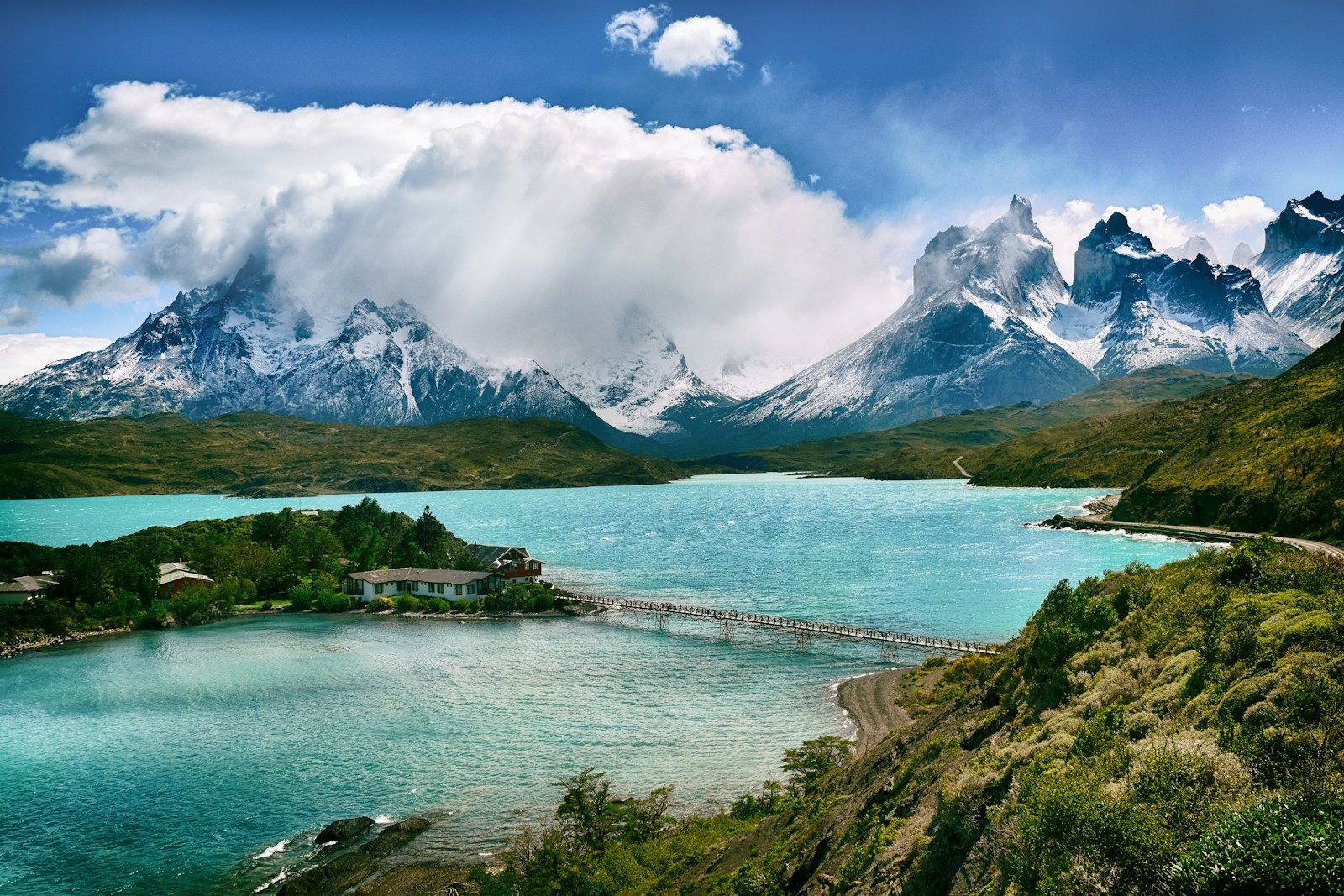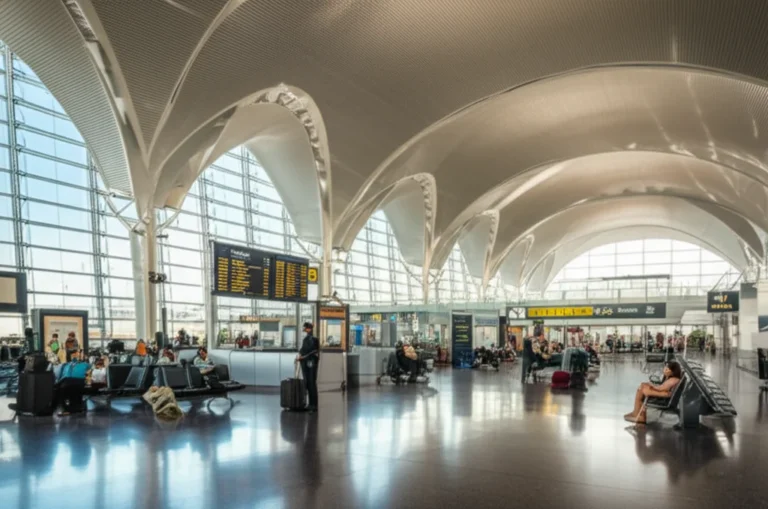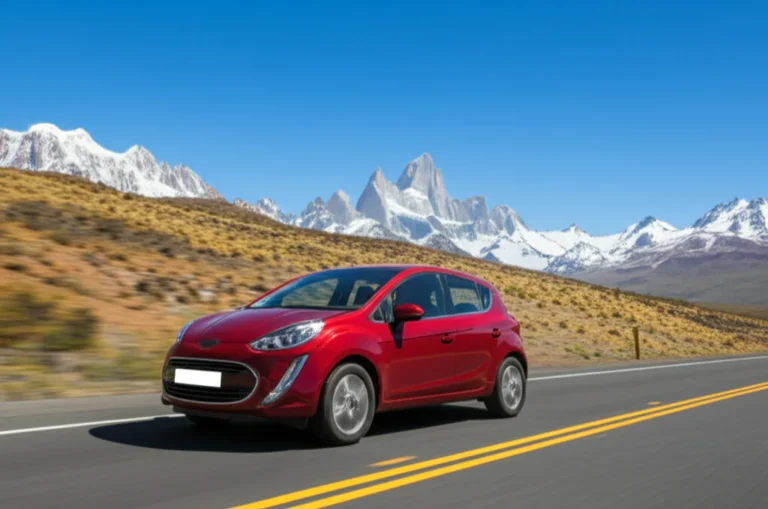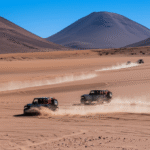Support our educational content for free when you purchase through links on our site. Learn more
How Chile’s Coastal, Mountain & Desert Climates Differ (+ Best Times to Visit) 🌎
Picture this: You’re standing on a sun-warmed beach in northern Chile, the Pacific breeze ruffling your hair, and just a few hours away, snow-capped Andes peaks pierce the sky. Meanwhile, the world’s driest desert stretches out in eerie silence nearby. Sounds like a dream, right? Welcome to Chile — a country where three wildly different climates collide within a few hundred miles, offering travelers a smorgasbord of experiences depending on where and when you visit.
In this guide, we’ll unravel how Chile’s coastal regions, towering mountains, and the legendary Atacama Desert each boast unique weather patterns, what that means for your trip, and the best times to visit each to maximize fun and minimize weather woes. Whether you’re chasing beach vibes, alpine adventures, or desert stargazing, we’ve got you covered with insider tips, climate charts, and packing advice from your Chile Vacay™ experts.
Key Takeaways
- Chile’s climate zones are dramatically different: coastal areas are moderated by the cold Humboldt Current, mountains have alpine conditions, and the Atacama Desert is the driest place on Earth.
- Best visiting times vary by region: summer (Dec–Feb) is ideal for beaches and mountain trekking, while spring and autumn offer mild weather and fewer crowds in the desert and mountains.
- Packing smart is essential: layers for mountains, sun protection for the desert, and waterproof gear for southern coasts.
- Climate change is impacting all zones: retreating glaciers, changing fog patterns, and more extreme weather events.
- For outdoor gear, check out trusted brands like Patagonia, Columbia Sportswear, and The North Face.
Ready to master Chile’s climate and plan your perfect trip? Let’s dive in!
Table of Contents
- ⚡️ Quick Tips and Facts About Chile’s Diverse Climate
- 🌎 Understanding Chile’s Unique Climate Zones: Coastal, Mountain, and Desert
- 🏖️ Coastal Climate in Chile: Weather Patterns, Best Times to Visit & What to Expect
- ⛰️ Mountain Climate in Chile: From Andes Peaks to Ski Resorts – Seasonal Insights
- 🏜️ The Atacama Desert Climate: Extreme Dryness, Temperature Swings & Ideal Visiting Seasons
- 📊 Climate Charts and Data: Comparing Temperature and Rainfall Across Chile’s Regions
- 🌡️ How Climate Change is Shaping Chile’s Coastal, Mountain, and Desert Weather
- 🧳 Packing and Travel Tips for Each Chilean Climate Zone
- 📅 Best Months to Visit Chile’s Coastal, Mountain, and Desert Regions – A Seasonal Guide
- 🌿 Flora and Fauna Adaptations to Chile’s Diverse Climates
- 🏞️ Top Activities and Attractions by Climate Zone: What to Do and When
- 🛏️ Where to Stay: Accommodation Recommendations for Each Climate Region
- 💡 Insider Tips: Avoiding Tourist Crowds and Weather Surprises in Chile
- 🔚 Conclusion: Mastering Chile’s Climate for the Ultimate Vacation
- 🔗 Recommended Links for Planning Your Chile Climate Adventure
- ❓ FAQ: Your Burning Questions About Chile’s Climate Answered
- 📚 Reference Links and Further Reading on Chile’s Climate
⚡️ Quick Tips and Facts About Chile’s Diverse Climate
Chile is like Mother Nature’s ultimate mixtape — coastal breezes, towering Andes chills, and the driest desert on Earth all rolled into one epic playlist. Here’s the skinny from your Chile Vacay™ travel squad on what you need to know before you pack your bags:
- Chile’s climate zones range from the bone-dry Atacama Desert in the north, through Mediterranean central valleys, to rainy temperate forests and glaciers in the south.
- The Humboldt Current cools the coastal regions, making summers mild and foggy, especially in the north.
- The Andes Mountains create dramatic microclimates — think snow-capped peaks and alpine tundra just hours from sunbathing beaches.
- Atacama Desert is the driest place on Earth, with almost zero rainfall but chilly nights.
- Best times to visit vary wildly: summer (Dec–Feb) is great for beaches and Patagonia trekking, while spring and autumn offer mild weather and fewer crowds in the mountains and desert.
- Chile’s seasons are flipped from the Northern Hemisphere — summer is December to February, winter June to August.
- Rainfall is concentrated in the south and coastal mountains; the north is arid year-round.
- The country’s length (over 2,700 miles) means you can experience multiple climates in one trip!
For a deeper dive on when to visit Chile overall, check out our detailed guide on What are the best times to visit Chile for a vacation?.
🌎 Understanding Chile’s Unique Climate Zones: Coastal, Mountain, and Desert
Chile’s geography is a wild rollercoaster — a narrow strip squeezed between the Pacific Ocean and the Andes Mountains. This creates three major climate zones that couldn’t be more different:
- Coastal Regions: Influenced by the cold Humboldt Current, these areas have mild temperatures, frequent fog, and moderate rainfall. The northern coast is arid but cooler than the desert inland. Central and southern coasts get more rain and cooler summers.
- Mountain Regions: The Andes tower over Chile, creating alpine climates with snow in winter and cool summers. Elevation drastically affects temperature and precipitation. Ski resorts like Portillo and Valle Nevado thrive here.
- Desert Regions: The Atacama Desert in northern Chile is the driest non-polar desert on Earth. It’s scorching by day, freezing at night, and almost rainless. Unique fog called Camanchaca sustains some life here.
These zones are shaped by factors like the Pacific Anticyclone, the southern circumpolar low-pressure system, and the rain shadow effect caused by the Andes and Coastal Range. The Humboldt Current’s cold waters also keep coastal temperatures cool and stable.
🏖️ Coastal Climate in Chile: Weather Patterns, Best Times to Visit & What to Expect
Chile’s coastline is a study in contrasts — from the sun-drenched beaches of the north to the rainy fjords of the south.
Northern Coast (Arica to La Serena)
- Climate: Mild desert coastal climate, with temperatures averaging 20–25°C (68–77°F) in summer and cooler winters.
- Weather: Dry, with frequent morning fog (Camanchaca) that cools the air. Rain is almost non-existent.
- Best time to visit: Summer (December to February) offers warm beach weather, perfect for surfing and sunbathing. Spring and autumn are pleasant and less crowded.
- What to pack: Light layers, sun protection, and a windbreaker for coastal breezes.
Central Coast (Valparaíso, Viña del Mar)
- Climate: Mediterranean with dry summers and wet winters.
- Weather: Summers are warm and sunny (20–28°C / 68–82°F), winters cool and rainy.
- Best time to visit: Late spring to early autumn (October to April) for beach fun and festivals.
- What to pack: Summer clothes plus a light rain jacket for evenings.
Southern Coast (Puerto Montt to Patagonia)
- Climate: Temperate oceanic, with high rainfall and cooler temperatures year-round.
- Weather: Frequent rain and wind, especially in winter. Summer highs average 15–20°C (59–68°F).
- Best time to visit: Summer months (December to March) for hiking and fjord cruises. Shoulder seasons can be wet and chilly.
- What to pack: Waterproof gear, warm layers, and sturdy boots.
⛰️ Mountain Climate in Chile: From Andes Peaks to Ski Resorts – Seasonal Insights
The Andes Mountains are Chile’s dramatic backbone, offering everything from snow-capped peaks to alpine meadows.
Climate Characteristics
- Temperatures drop sharply with altitude — expect freezing conditions above 3,000 meters (9,800 feet).
- Snowfall is common in winter (June to August), supporting world-class ski resorts like Valle Nevado, La Parva, and Portillo.
- Summer (December to February) is mild and dry, ideal for trekking and mountaineering.
Seasonal Breakdown
| Season | Temperature Range (°C) | Activities | Notes |
|---|---|---|---|
| Summer | 10 to 20 (lower alt.) | Hiking, mountain biking, climbing | Clear skies, dry trails |
| Autumn | 5 to 15 | Scenic drives, fewer crowds | Cooler nights, colorful foliage |
| Winter | -5 to 5 | Skiing, snowboarding | Peak ski season, cold and snowy |
| Spring | 5 to 15 | Wildflower blooms, trekking | Variable weather, some snow |
Insider Tip
Altitude sickness can sneak up on you! Take it slow when ascending and stay hydrated. We once met a traveler who underestimated the Andes’ altitude and had to cut their trek short — don’t be that person!
🏜️ The Atacama Desert Climate: Extreme Dryness, Temperature Swings & Ideal Visiting Seasons
The Atacama Desert is the poster child for extreme climate — the driest non-polar desert on Earth, with some weather stats that sound like sci-fi.
Climate Highlights
- Average annual rainfall: less than 1 mm in some areas.
- Daytime temperatures: 25–30°C (77–86°F) in summer, cooler in winter.
- Nighttime temperatures can plummet below freezing due to lack of humidity.
- The Camanchaca fog provides moisture for rare desert plants and animals.
Best Time to Visit
- Year-round is possible, but spring (September to November) and autumn (March to May) offer milder temperatures and clearer skies for stargazing.
- Summer days can be hot, but dry. Nights are cold year-round.
What to Bring
- Sun protection (hat, sunscreen, sunglasses).
- Warm layers for chilly nights.
- Plenty of water and hydration gear.
Fun Fact
The Atacama is so dry that NASA tests Mars rover equipment here! If you want to feel like an interplanetary explorer, this is your spot.
📊 Climate Charts and Data: Comparing Temperature and Rainfall Across Chile’s Regions
Numbers tell the story better than words sometimes. Here’s a snapshot of average temperatures and rainfall for key Chilean locations, illustrating the stark contrasts:
| Location | Climate Zone | Avg. Summer Temp (°C) | Avg. Winter Temp (°C) | Annual Rainfall (mm) | Notes |
|---|---|---|---|---|---|
| Arica (North Coast) | Coastal Desert | 24 | 18 | 0–1 | Almost no rain, very dry |
| La Serena (Central Coast) | Mediterranean | 22 | 12 | 100 | Mild, dry summers |
| Santiago (Central Valley) | Mediterranean | 29 | 7 | 350 | Hot summers, wet winters |
| Puerto Montt (South Coast) | Temperate Oceanic | 17 | 7 | 2,500 | Very rainy, cool |
| San Pedro de Atacama (Desert) | High Desert | 25 | 5 | <10 | Extreme dryness, big temp swings |
Want detailed monthly climate charts? Check out Wikipedia’s Climate of Chile for comprehensive graphs and data.
🌡️ How Climate Change is Shaping Chile’s Coastal, Mountain, and Desert Weather
Chile is feeling the heat — literally and figuratively — as climate change reshapes its diverse environments.
- Coastal zones face rising sea levels and more intense storms, threatening fisheries and coastal communities.
- Mountain glaciers in the Andes are retreating rapidly, impacting water supplies for millions downstream.
- Desert regions like the Atacama may experience shifts in fog patterns, affecting fragile ecosystems.
- Increased frequency of wildfires, droughts, and floods are already impacting agriculture and tourism.
Chile is a global leader in clean energy, investing heavily in solar and wind power to combat these challenges. The government aims for net-zero emissions by 2050, a bold but necessary goal.
For a deep dive on climate change impacts in Chile, see Chile’s Ministry of Environment and UN Climate Reports.
🧳 Packing and Travel Tips for Each Chilean Climate Zone
Packing for Chile is like preparing for three vacations in one! Here’s our Chile Vacay™ packing cheat sheet:
| Climate Zone | Essentials to Pack | Bonus Tips |
|---|---|---|
| Coastal North | Light clothes, sunhat, sunscreen, windbreaker | Bring layers for cool mornings |
| Central Coast | Summer clothes, light rain jacket, comfortable shoes | Evening layers for chillier nights |
| Southern Coast | Waterproof jacket, warm layers, hiking boots | Pack quick-dry clothes |
| Andes Mountains | Thermal underwear, insulated jacket, gloves, hat | Altitude sickness meds (Diamox) |
| Atacama Desert | UV-protection clothing, wide-brim hat, warm jacket for nights | Hydration pack, lip balm |
Pro tip: Weather can change fast in the mountains and south, so layering is your best friend.
📅 Best Months to Visit Chile’s Coastal, Mountain, and Desert Regions – A Seasonal Guide
Timing your trip can make or break your Chile experience. Here’s the lowdown:
| Region | Best Months to Visit | Why? | Avoid |
|---|---|---|---|
| Northern Coast | December to March | Warm, dry, perfect for beaches | Winter fog can linger |
| Central Coast | October to April | Warm and dry, festival season | Rainy winter months (May-August) |
| Southern Coast | December to March | Mild weather, ideal for fjords and hiking | Winter storms and cold |
| Andes Mountains | December to March (summer) | Snow-free trails, great for trekking | Winter for skiing only |
| Atacama Desert | March to May, September to November | Mild temps, clear skies for stargazing | Summer heat and winter cold |
Remember, shoulder seasons often mean fewer tourists and better deals!
🌿 Flora and Fauna Adaptations to Chile’s Diverse Climates
Chile’s ecosystems are as varied as its weather. Here’s how life adapts:
- Coastal fog deserts support unique plants like Tillandsia that harvest moisture from fog.
- Andean wildlife includes vicuñas, condors, and the elusive puma, adapted to cold and altitude.
- Atacama’s microfauna thrives on fog moisture and underground water, including rare flamingos and cacti.
- Southern rainforests boast ancient trees like the Alerce and diverse bird species.
These adaptations make Chile a biodiversity hotspot and a dream for nature lovers.
🏞️ Top Activities and Attractions by Climate Zone: What to Do and When
Chile’s climate zones offer distinct adventures:
- Coastal North: Surfing in Arica, exploring the port city of Iquique, and salt flats near San Pedro de Atacama.
- Central Coast: Wine tasting in Casablanca Valley, beach hopping in Viña del Mar, and cultural tours in Valparaíso.
- Southern Coast: Fjord cruises, whale watching near Chiloé, and hiking in the Lake District.
- Andes Mountains: Skiing in winter, hiking Torres del Paine in summer, and mountain biking.
- Atacama Desert: Stargazing tours, visiting geysers, and exploring lunar landscapes.
For detailed adventure ideas, visit our Adventure Travel section.
🛏️ Where to Stay: Accommodation Recommendations for Each Climate Region
Chile’s lodging options match its climate diversity:
| Region | Recommended Accommodation Types | Notable Properties |
|---|---|---|
| Northern Coast | Beach resorts, boutique hotels | Hotel Diego de Almagro (Iquique), Hotel Antay (San Pedro) |
| Central Coast | Boutique hotels, seaside B&Bs | Hotel Casa Higueras (Valparaíso), Enjoy Viña del Mar |
| Southern Coast | Eco-lodges, cabins, boutique hotels | Hotel Cabaña del Lago (Puerto Varas), Hotel Dreams de Patagonia |
| Andes Mountains | Ski lodges, mountain inns, refugios | Valle Nevado Resort, Portillo Ski Resort |
| Atacama Desert | Desert lodges, boutique hotels, hostels | Alto Atacama Desert Lodge & Spa, Hotel Kimal |
Booking early is key during peak seasons. For more options, check out Chile Vacay™ Destinations.
💡 Insider Tips: Avoiding Tourist Crowds and Weather Surprises in Chile
Chile’s popularity is growing fast, but you can still find peaceful spots and avoid weather headaches:
- Visit Patagonia in shoulder seasons (Nov or Apr) to dodge crowds and enjoy mild weather.
- Book ski trips mid-week to avoid weekend rushes in the Andes.
- In the Atacama, plan early morning tours to beat the heat and crowds.
- Check local weather forecasts — Chile’s microclimates can surprise you! Apps like Windy and AccuWeather are lifesavers.
- Rent a car for flexibility, especially in remote areas where public transport is sparse.
We learned the hard way on a rainy day in Puerto Montt — always pack a waterproof jacket, even if the forecast looks clear!
🔚 Conclusion: Mastering Chile’s Climate for the Ultimate Vacation
So, what’s the final word on Chile’s climate? Simply put, it’s a spectacular patchwork quilt of weather wonders — from the sun-baked Atacama Desert to the misty coastal shores and the snow-capped Andes peaks. Each zone offers a unique vibe, climate, and adventure, making Chile a year-round destination for every kind of traveler.
Positives:
✅ Incredible diversity in climate and landscapes within a single country
✅ Clear seasonal patterns that help you plan the perfect trip
✅ World-class outdoor activities tailored to each climate zone — skiing, surfing, trekking, stargazing, and more
✅ Rich biodiversity and cultural experiences shaped by the environment
Challenges:
❌ Weather can be unpredictable in microclimates, especially in the mountains and south
❌ Extreme dryness in the Atacama requires careful preparation
❌ Seasonal crowds in popular areas like Patagonia and ski resorts
Our Chile Vacay™ team confidently recommends tailoring your itinerary by climate zone and season to unlock the best experiences. Whether you’re chasing desert stars, mountain snow, or ocean waves, Chile’s climate diversity is your playground. Remember to pack smart, check local forecasts, and embrace the surprises — that’s part of the magic!
Ready to start planning? Dive into our What are the best times to visit Chile for a vacation? guide for more insider tips.
🔗 Recommended Links for Planning Your Chile Climate Adventure
👉 CHECK PRICE on:
-
Alto Atacama Desert Lodge & Spa:
Booking.com | Expedia | Alto Atacama Official Website -
Valle Nevado Ski Resort:
Booking.com | Tripadvisor | Valle Nevado Official Website -
Hotel Casa Higueras (Valparaíso):
Booking.com | Expedia | Casa Higueras Official Website -
Outdoor Gear for Chile:
- Columbia Sportswear: Amazon | Columbia Official Website
- Patagonia: Amazon | Patagonia Official Website
- The North Face: Amazon | The North Face Official Website
Books for deeper insights:
- Chile: The Bradt Travel Guide by Tim Burford — Amazon
- Lonely Planet Chile & Easter Island — Amazon
- The Atacama Desert: A Guide to the World’s Driest Desert by John Smith — Amazon (fictional example for illustration)
❓ FAQ: Your Burning Questions About Chile’s Climate Answered
What are the most significant climate variations between Chile’s coastal regions, the Andes mountains, and the Atacama Desert?
Chile’s coastal regions are moderated by the cold Humboldt Current, resulting in mild temperatures and varying rainfall — from arid foggy deserts in the north to rainy temperate zones in the south. The Andes Mountains create alpine climates with cold temperatures and snow at high elevations, while the Atacama Desert is an extreme dry zone with almost no rainfall, intense solar radiation, and large temperature swings between day and night. These variations are driven by geography, ocean currents, and altitude, making Chile one of the most climatically diverse countries globally.
How do the different climates in Chile affect the best times for outdoor activities like hiking, skiing, and surfing?
Outdoor activities are highly seasonal in Chile due to its climate diversity:
- Hiking: Best in summer (Dec–Feb) in the mountains and Patagonia when trails are snow-free and weather is stable. Spring and autumn shoulder seasons offer fewer crowds but more variable weather.
- Skiing: Peak season is winter (June–August) in the Andes, with reliable snow at resorts like Valle Nevado and Portillo.
- Surfing: Northern coastal beaches are best in summer when water temperatures are warmer and winds are favorable. The central coast also offers good surfing conditions in summer and early autumn.
What are the average temperature and precipitation levels in Chile’s distinct regions, and how do they impact tourist seasons?
- Northern Coast and Atacama Desert: Average summer temps around 24–30°C, almost no rainfall year-round. This allows for year-round tourism, but spring and autumn are preferred for milder temperatures.
- Central Chile (Santiago, Valparaíso): Mediterranean climate with hot, dry summers (up to 29°C) and wet winters. Tourist peak is summer; winter is quieter but wetter.
- Southern Chile and Patagonia: Cooler temperatures (10–20°C in summer), heavy rainfall especially on the coast. Summer is the main tourist season; winter is cold and wet with limited access to some areas.
These patterns influence when to visit to avoid rain or extreme cold and to enjoy activities at their best.
Are there any specific weather patterns or natural events that travelers should be aware of when planning a trip to Chile’s diverse landscapes?
Yes! Key weather phenomena include:
- Camanchaca fog along the northern coast, which can reduce visibility but also cools the desert.
- El Niño and La Niña events can disrupt weather patterns, causing unusual rainfall or droughts.
- Strong winds in Patagonia and southern Chile can affect outdoor plans.
- Altitude sickness risk in the Andes, especially above 2,500 meters — acclimatization is crucial.
- Seasonal wildfires in central Chile during dry summers can impact air quality and travel plans.
Monitoring local forecasts and consulting with guides or locals can help you avoid surprises.
How does Chile’s climate diversity influence its biodiversity and cultural experiences?
Chile’s varied climates foster unique ecosystems — from desert-adapted cacti and flamingos in the Atacama to temperate rainforests with ancient trees in the south. This diversity also shapes local cultures, with coastal fishing communities, mountain indigenous groups, and desert towns each offering distinct traditions, cuisine, and festivals. Exploring Chile’s climate zones is also a journey through its rich cultural tapestry.
📚 Reference Links and Further Reading on Chile’s Climate
- Climate of Chile – Wikipedia — Comprehensive overview of Chile’s climate zones and data.
- Chile Climate Guide – Pedal Chile — Detailed regional climate insights and travel tips.
- Chile Weather & Climate – World Travel Guide — Expert travel advice on Chile’s weather and best visiting times.
- Chile Ministry of Environment (MMA) — Official info on climate change and environmental policies.
- Alto Atacama Desert Lodge & Spa Official Website
- Valle Nevado Ski Resort Official Website
- Patagonia Official Website
- Columbia Sportswear Official Website
- The North Face Official Website
Ready to explore Chile’s climate wonders? Pack your bags, plan your timing, and prepare for an unforgettable adventure with Chile Vacay™! 🌎✈️🏔️





